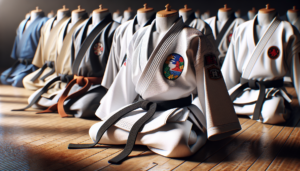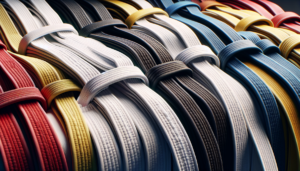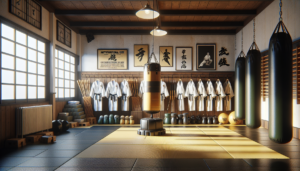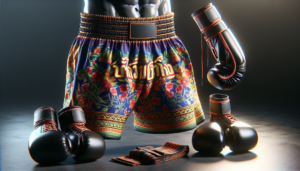Introduction to Karate Suit Name
The karate suit, also known as a karate gi or martial arts uniform, is an essential piece of attire for practitioners of this traditional Japanese martial art. Understanding the terminology, styles, and cultural significance of the karate gi is crucial for any student of karate.
What is a Karate Gi?
A karate gi, pronounced “ghee,” refers to the traditional uniform worn by karate practitioners. It consists of a loose-fitting jacket, pants, and a belt that indicates the student’s rank. The gi is designed to allow freedom of movement while training and practicing various karate techniques.
The term ‘Gi’ specifically refers to the karate uniform, although different martial arts have their own specific names for uniforms, such as judogi for judo.
Historical Background of the Karate Gi
The origins of the karate gi can be traced back to 1882, based on the judo uniform design created by Kano Jigoro. The modern gi evolved from the undergarments worn by samurai, which provided warmth and protection beneath their armor.
As karate developed as a martial art, the gi became a symbol of dedication, discipline, and respect. The uniform helps to create a sense of unity and equality among students, regardless of their background or skill level.
Different Styles and Types of Karate Gi
While the basic design of the karate gi remains consistent, there are various styles and types available to suit different preferences and needs.
Traditional vs. Modern Karate Gi
Traditional karate gi are typically made from heavier cotton fabric and feature a looser fit, allowing for greater ease of movement. They often have shorter sleeves and pants compared to modern styles.
Modern karate gi, on the other hand, are usually made from lighter, more breathable materials like cotton-polyester blends. They tend to have a slimmer, more tailored fit and may feature reinforced stitching for added durability.
Karate Gi Colors and Their Significance
The most common color for a karate gi is white, which symbolizes purity and a beginner’s blank slate as they start their martial arts journey. However, some styles and schools may use different colors to denote rank or distinguish themselves.
For example, in some karate styles, black gi are reserved for advanced students or instructors. Other colors, such as blue or red, may be used for competition or to represent specific karate schools or organizations.
Choosing the Right Karate Gi
When selecting a karate gi, it’s important to consider factors such as material, fit, and personal preferences to ensure the best possible training experience.
Material and Fabric of Karate Gi
Karate gi are typically made from cotton or a cotton-polyester blend. Cotton gi offer a natural stretch and are known for their comfort, while blends provide increased durability and faster drying times.
Look for a gi made from high-quality, durable fabric that can withstand regular training and repeated washing. The material should also be breathable to help keep the wearer cool and comfortable during intense practice sessions.
Ensuring a Comfortable Fit
A well-fitting karate gi is essential for both comfort and performance. The jacket should be loose enough to allow for a full range of motion but not so baggy that it gets in the way during techniques.
The pants should be comfortably fitted at the waist and allow for easy movement of the legs. Many gi feature adjustable drawstrings or elastic waistbands to ensure a secure and customizable fit.
When trying on a karate gi, perform some basic techniques and movements to ensure that the uniform allows for unrestricted mobility without any pinching or binding.
Caring for Your Karate Gi
Proper care and maintenance of your karate gi are crucial for ensuring its longevity and maintaining a clean, professional appearance on the mat.
Common Mistakes in Karate Gi Maintenance
Some common mistakes people make when caring for their gi include:
- Not washing the gi after every use
- Using harsh detergents or bleach, which can damage the fabric
- Drying the gi on high heat, causing shrinkage and weakening the material
- Storing the gi while still damp, leading to mold and mildew growth
To avoid these issues, always hang your gi to air out after each training session and wash it regularly using mild detergent and cold water.
Tips for Proper Karate Gi Care
To keep your karate gi in top condition, follow these care tips:
| Wash | After each use with mild detergent in cold water |
| Dry | Hang to air dry or tumble dry on low heat |
| Iron | If desired, iron on low heat to maintain crispness |
| Treat stains | Spot clean with vinegar or gentle stain removers |
| Store | In a cool, dry place away from direct sunlight |
By following these simple care instructions, you can ensure that your karate gi stays in excellent condition and lasts for many training sessions to come.
Cultural Significance of the Karate Gi
Beyond its practical purposes, the karate gi holds deep cultural significance within the martial art and serves as a symbol of the values and etiquette associated with karate.
Symbolism and Respect in Wearing a Karate Gi
Wearing a karate gi represents a student’s commitment to the discipline, respect for the art, and humility in the face of continuous learning. The act of donning the uniform signifies a readiness to train, learn, and grow both physically and mentally.
In many dojos, students are expected to bow before entering and leaving the training area, as well as when interacting with instructors and fellow students. This act of respect is closely tied to the wearing of the karate gi.
Terminology and Misconceptions
While the term “karate gi” is most commonly used, it is sometimes referred to simply as a “gi” or “dogi.” These terms are often used interchangeably in the context of karate.
One common misconception is that the word “gi” is a borrowed term in English. In fact, “gi” is the correct Japanese term for the uniform, and its usage in English is a direct adoption of the original word.
Conclusion
The karate gi is a fundamental aspect of karate training, serving both practical and symbolic purposes. By understanding the history, styles, and care requirements of the karate uniform, practitioners can develop a deeper appreciation for the art and its traditions.
Whether you are a beginner or an advanced student, investing in a high-quality, well-fitting karate gi is essential for your martial arts journey. With proper care and respect for the uniform, you can embody the values of discipline, dedication, and humility that are at the heart of karate.






